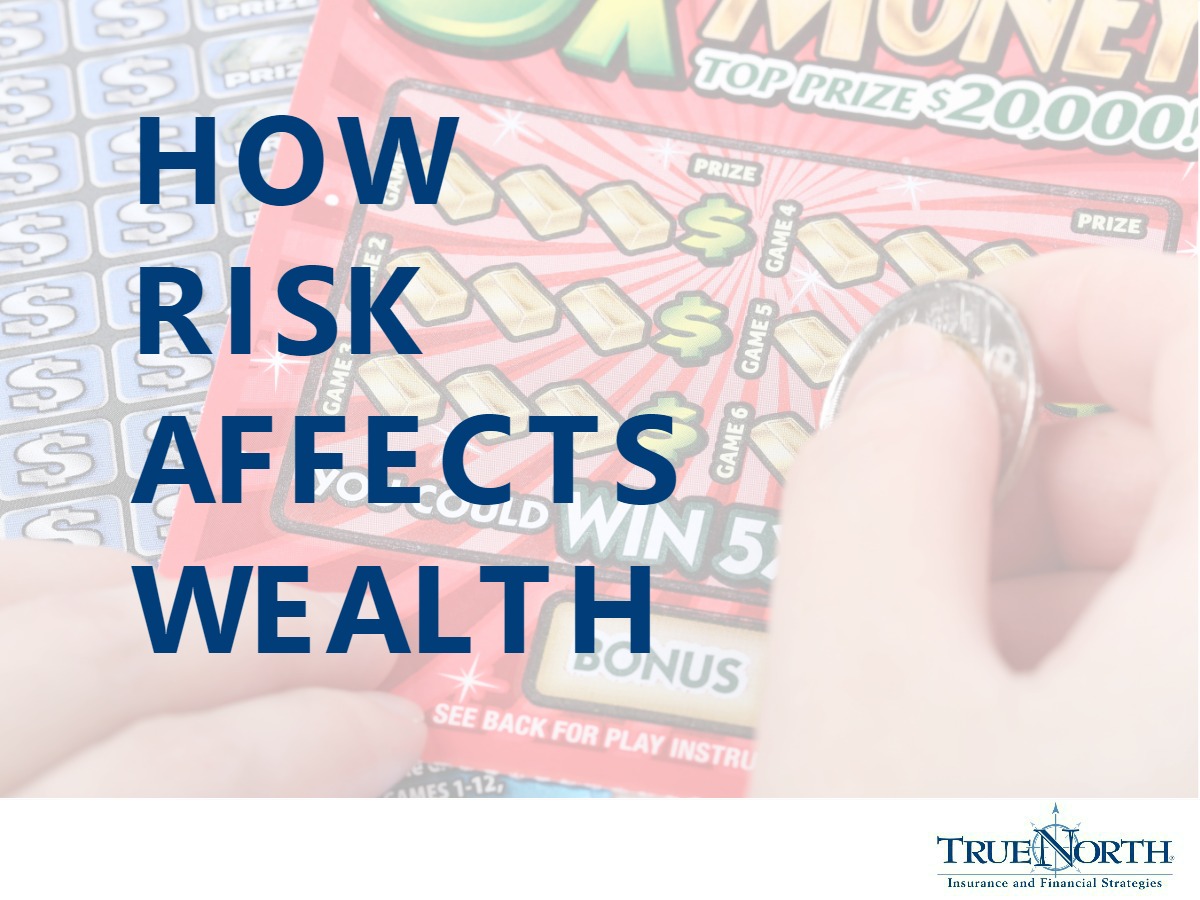How Risk Affects Wealth
Tips for Taking the Fear Out of Investing
 Do you think one dollar invested in the state lottery is a risky investment? Many people are surprised to learn that the answer is no. It is not risky because you are almost assured your payback from the investment will be zero. There is little risk because you know the likely outcome in advance.
Do you think one dollar invested in the state lottery is a risky investment? Many people are surprised to learn that the answer is no. It is not risky because you are almost assured your payback from the investment will be zero. There is little risk because you know the likely outcome in advance.
What is Risk?
Risk can be defined as the chance that some unfavorable event will occur. For example, say you purchase shares in a mutual fund today, but plan to withdraw your money in a year. Your risk is the chance that your shares will be worth less in one year than today. There is also a chance that your shares will be worth more.
Different types of investments carry different risks. One dollar invested in a certificate of deposit (CD) at your bank is a low-risk investment because you have little chance of losing the dollar. But a dollar invested in a share of common stock is more risky because you stand a greater chance of losing money with this type of investment than in a CD.
What is the Connection Between Risk and Return on Investment?
Here is the first rule of investing: You must take more risk to have a chance at a greater return. Revisiting the CD versus a share of common stock example, though the common stock had more risk, it also provides the opportunity for greater return.
Assessing Risk
Deciding how much risk to take on is a personal decision for each person, but it is important to know how risk is measured. One way to measure risk is to look at your age. Generally, the younger your age, the more risk you can afford to take. That's because all major investment classes tend to grow in value over time. For example, if you are age 30 today, the chance (or risk) that you will lose money on your investment by age 65 is very small. Conversely, if you are planning to retire in two years, the risk is higher that investments you buy today could lose money in two years. Investment managers also have sophisticated mathematical tools for assessing risk.
Types of Risk
The risk you take in purchasing an investment can take different forms.
- Market Risk - The chance that your investment will increase or decrease in value if the market of similar investments increases or decreases.
- Inflation Risk - The chance that your investment will increase or decrease in value due to an incrase or decrease in interest rates. As a rule, bonds will decrease in value when interest rates rise.
Other types of risk can also affect your investment. For example, the organization that is secured by your investment may have a successful or unsuccessful year, affecting the value of your investment. An organization's ability to borrow money at preferred rates can also affect a stock's value.
Reducing Risk
One way to reduce risk is through diversification, or spreading your money over a variety of investments. That way if one investment decreases in value, other investments may remain stable or increase in value, minimizing the impact of loss. This is the concept behind mutual funds. A mutual fund is a diversified portfolio of investments. Most 401(k) and 403(b) plans offer mutual funds as an investment choice. Mutual funds are a great way to reduce company-specific risk and, in some casses, market risk.
Risk is a fact of investing and not something to fear. Understanding risk in general and the specific types associated with individual investments is essential for the smart investor. If you would like more information on how to invest your finances, please contact TrueNorth.